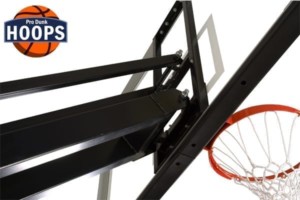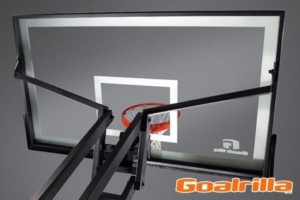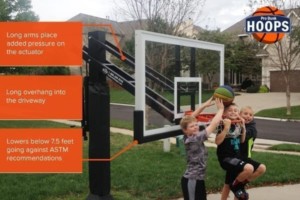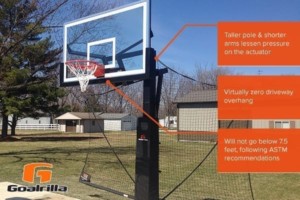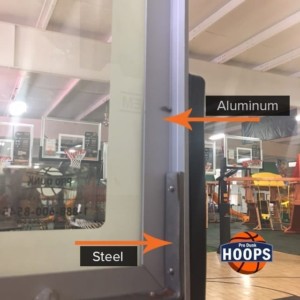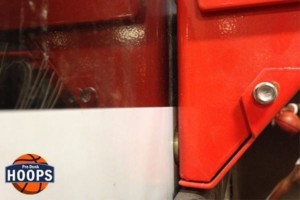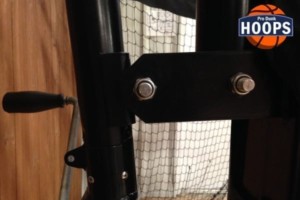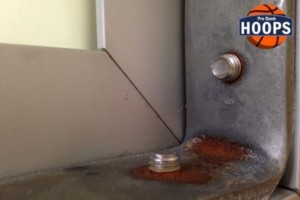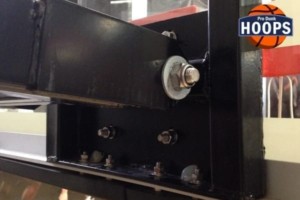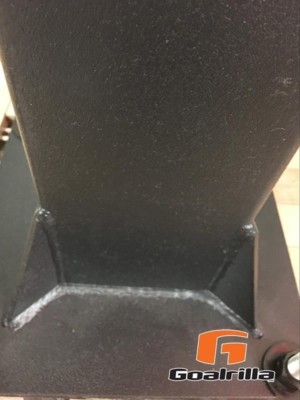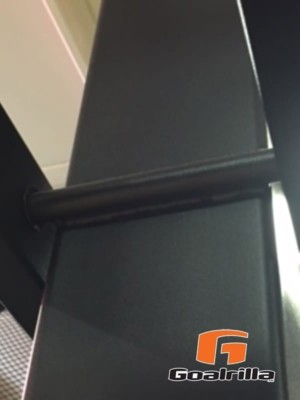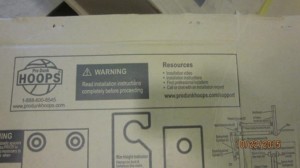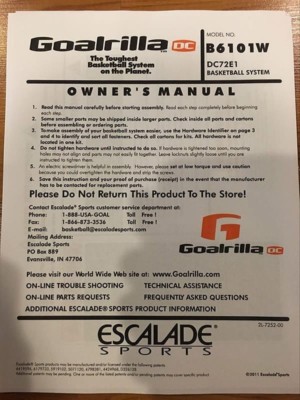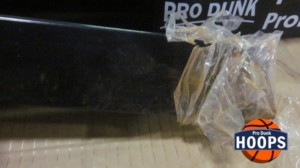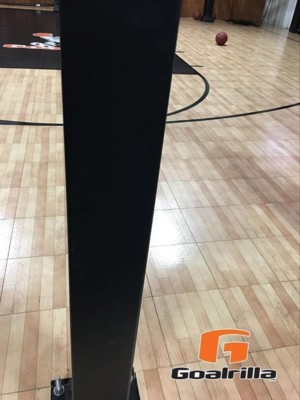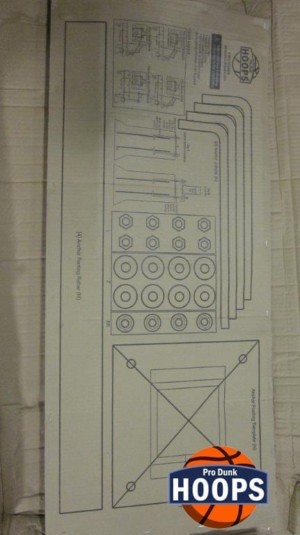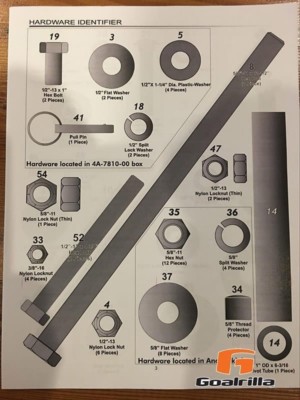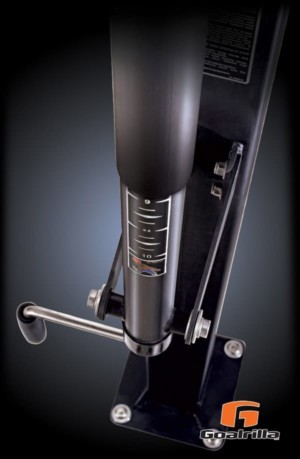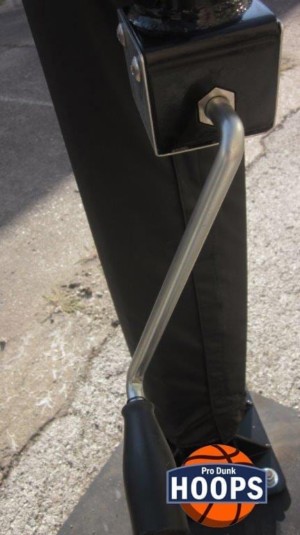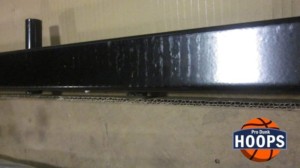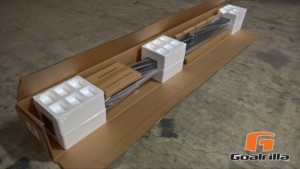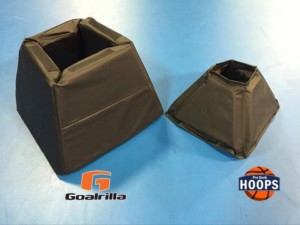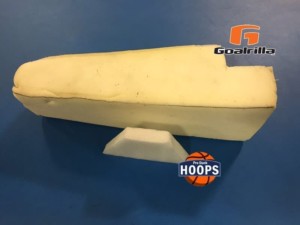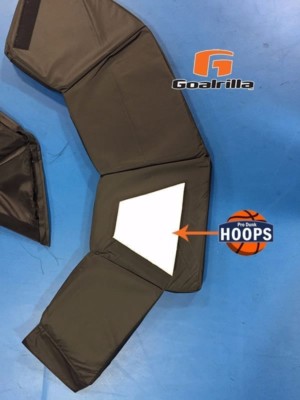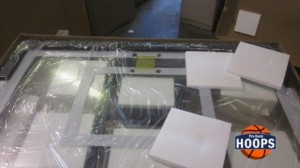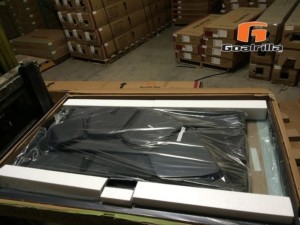
So, you’re in the market for a residential basketball goal and can’t decide which brand is going to give you the best performance and quality for your money. Today, we’re going to give a comparison of Goalrilla vs Pro Dunk Hoops basketball hoop systems. Goalrilla dates back to 1995, as does Pro Dunk Hoops. Even though they’ve been around for the same amount of time, it’s important to note several key elements that differentiate them from one another. Let’s take a look.
Pro Dunk |
Goalrilla |
|
| Pole Height & Strength | Shorter, thicker pole. General consensus is that this increases the length of the board arms and weakens strength of the overall system. Long arms cause vibration, and lowering below 7.5 feet goes against ASTM recommendations. | ✓ Longer pole makes for shorter pole arms and less overall vibration. Follows ASTM recommendations not lowering below 7.5 feet. |
| Backboard Arms | Straight arms lead to a good amount of driveway encroachment when goal is lowered. | ✓ Y-shapedarms leave a more stable and consistent bounce off the backboard. The shorter arms result in zero driveway encroachment. |
| Backboard | Aluminum frame with steel reinforcement. | ✓ Aluminum frame and all-steel support. Clear view backboard on most models. |
| Rim | No cut out of glass on the Pro Dunk backboard which means the rim is mounted right on top of the glass. | ✓ Glass is cut out so the rim is mounted directly to a steel plate and never to the glass. |
| Paint/Weather Proofing | $149 added charge for protective galvanized rust coating. | ✓ DUPONT® powder coated UV and corrosion resistant comes standard. |
| ASTM Compliant | No | ✓ Yes |
| Average Goal Weight | ✓ Heavier | Lighter |
| Pole Height | 8 feet | ✓ 10 feet |
| Clear-view/Arena-View Backboard Offered | No | ✓ Yes, see CV54, CV60, CV72, CV72S or CV60S models |
| STBLZR Technology Offered | No | ✓ Yes, see CV72S or CV60S models |
| Removable Actuator Handle to Lock In Height? | No | ✓ Yes, standard on all Goalrilla systems, see Goalrilla Actuator Handle and Pin |
Let’s take a look at the board arms of each goal. The board arms on the Pro Dunk goal are straight arms. This is great for Pro Dunk, as they are more easily packaged and they cut down on shipping cost. Unfortunately, for the customer, this is a disadvantage. With straight board arms, the only support for the backboard is the connection in the center of the board where the arms mount on the Pro Dunk goal. This not only causes twisting of the backboard, but it also gives you hot spots on the backboard, resulting in inconsistent play and rebounding. Pro Dunk has stated that the only part of the backboard that needs a “true bounce” is the shooting square. This is just simply not true. The board arms on the Goalrilla hoop are a “Y” shape, therefore giving more support towards the edges of the backboard and providing a more stable playing surface, including a true rebound from any spot on the backboard. Many customers also prefer this “Clear View” or “Arena View” backboard look, as it is called. Basically you are given an unobstructed view of the backboard, whereas the “H Frame” of the Pro Dunk blocks your line of sight. Goalrilla offers many options for customers looking for that “Clear View” or “Arena View” look.
Let’s begin by examining the shorter pole on the Pro Dunk systems. The only benefit to using a shorter pole is to save on cost of materials and shipping for the manufacturer. The shorter pole forces the use of longer board arms, which actually weakens the entire system. Using such a long arm also causes excessive vibration, twisting, and side to side movement, which in turn diminishes the playability of the goal. The Goalrilla goal uses a full size 10 foot pole. This lets the arms be mounted higher on the pole and allows for shorter arms and less vibration. Shorter arms also stop the side to side movement and twisting of the backboard, giving you a rock solid play. Another big issue with the long board arms is encroachment on your driveway. To combat this, Pro Dunk will recommend a goal that fits the size of your driveway or playing area. They do this because of the excessive overhang the long arms create. When you crank a Prod Dunk goal down, it is going to consume half of your driveway. Since the goals go lower than the ASTM recommended 7.5 feet, your kids are also going to leave it in a lowered position and you, or your friend, or a delivery driver, are going to be likely to back into it. With a Goalrilla hoop you’re going to have ZERO DRIVEWAY ENCROACHMENT. The goal conforms to ASTM safety standards and goes no lower than 7.5 feet, and since Goalrilla uses a full size post there is no need for the excessive arm length that causes the encroachment on your driveway. Goalrilla goals were designed with all of this in mind. They were designed for you, the customer. Put simply, if everyone could get away with having a quality in-ground basketball hoop with a 2 foot pole they would, because it would dramatically cut down on shipping costs, but they can’t, and 10 feet is the standard for quality play.
Every year the ASTM (American Society of Testing and Materials) does a basketball safety review. The lowered height of the goal is always their biggest concern. Almost all basketball related dental, head, and neck injuries are from hoops that go lower than the ASTM standard of 7.5 feet. With safety in mind, ALL Goalrilla goals conform to ASTM standards and will go no lower than 7.5 feet, greatly reducing the possibility of these type of injuries. This is very important and with most safety-minded goals, this is a standard feature.
Next, let’s look at the backboard of the Pro Dunk goal. Pro Dunk uses an aluminum frame for their backboards. Aluminum is weaker than an all-steel frame. Aluminum framework is capable of flexing and can even permanently deform, causing exposed glass and/or failure. Since the aluminum is inherently weak, an independent steel frame bolted to the aluminum frame is needed on the Pro Dunk goal to mount the backboard to the arms. Goalrilla uses a full steel frame with a radius edged aluminum frame around the perimeter of the goal. The Goalrilla glass is sandwiched between the metal frame. It is attached to the steel frame using an ASTM approved 3M branded two sided tape. This application allows for a more consistent transfer of force into the supporting frame and makes for a better playing system.
The rim mounting systems on Pro Dunk and Goalrilla are very different. On the Pro Dunk system, there is no cut out of glass on the backboard, which means the rim is mounted right on top of the glass. This, in turn means that all of the force that is applied to the rim is transferred right to the glass. This can cause the Pro Dunk backboard to shatter under not just aggressive, but even normal play. All of the Goalrilla systems feature a cutout in the glass so the rim is mounted directly to a steel plate and never to the glass. This ensures that no excessive force is applied to the glass, therefore preventing breakage or shattering of the glass.
Goalrilla has made sure to design their goals with well placed welds and minimized the use of exposed bolts. They also offer clean welds at the base of the post Looking at the Pro Dunk goal reveals many exposed bolt threads, and the base of the basketball goal and extension arms have severe weld splatters and are very messy.
Pro Dunk does not provide installation manuals with the purchase of their basketball systems. The customer is responsible for printing this manual off of their website. Goalrilla provides a printed in-depth installation manual with every goal. Manuals for all Goalrilla products can be found on our website.
The Pro Dunk basketball goal was delivered unpackaged, devoid of any covering to protect the exterior gloss paint in transit. In fact, the gloss paint had already chipped away and began the rusting process. Goalrilla uses a superior packaging method that utilizes styrofoam, cardboard, and plastic covering to protect the goal while in transit.
The Pro Dunk actuator handle is permanently fixed and non removable. Anyone could walk up to the goal and adjust it without permission. Goalrilla’s actuator handle is removable so you can set the goal at a desired height and remove the handle. If the goal is in a commercial setting, you can set the goal at 10 feet, remove the handle, and the goal becomes fixed at regulation height.
Pro Dunk used small pieces of styrofoam between the backboard and cardboard box, as well as minimal packaging for a large piece of tempered glass. Goalrilla used large pieces of cardboard to line the top and bottom of the backboard to protect the aluminum framing. Goalrilla also used the base pad to protect the glass of the backboard in transit.
Summary
Taking all of these test areas into consideration, we would tend to give the win to Goalrilla for quality and value for those looking for a high end residential basketball system. Goalrilla has been designing residential hoops since 1995 and it seems like they have been continually tweaking their designs to withstand the rigor of weather and aggressive play. Additionally, with its lifetime warranty, the best or at least equal to its competition, it really is hard to make a mistake. And lastly, we really love their new STBLZR models on the CV72S and CV60S, a really cool technology that I haven’t seen on any other basketball hoop ever, they are paired with a clear view backboard that really make them one of the coolest-looking and performing goals we have seen. Call BasketballGoalStore.com today at 1-800-689-0281 and one of our friendly and knowledgeable associates will help you find the best hoop for your application.
Update: 6/17/15
Due to the popularity of this blog post, we have decided to elaborate on our initial tests and comparisons.
Below is a copy of the ASTM standards for residential basketball systems. The specification convers the manufacture, assembly, and recommended maintenance and use of complete residentail basketball systems. This standard is intended to reduce the potential hazards associated with the installation and use of residential basketball systems. Most manufacturers conform to these standards, brands like Goalrilla, Lifetime, and Spalding. Some manufacturers choose not to follow these standards, Pro Dunk Hoops is one of these manufacturers that chooses not to conform.
ASTM_Standards_F1882-06 »
Update: 2/23/16
This blog post has been further updated to include additional in-depth analysis and comparisons between Pro Dunk Hoops and Goalrilla.
 Best Price Guarantee
Best Price Guarantee

